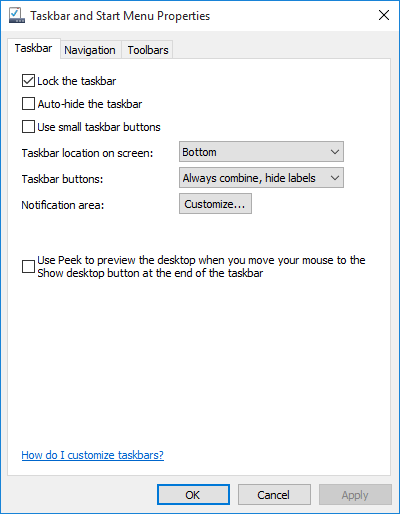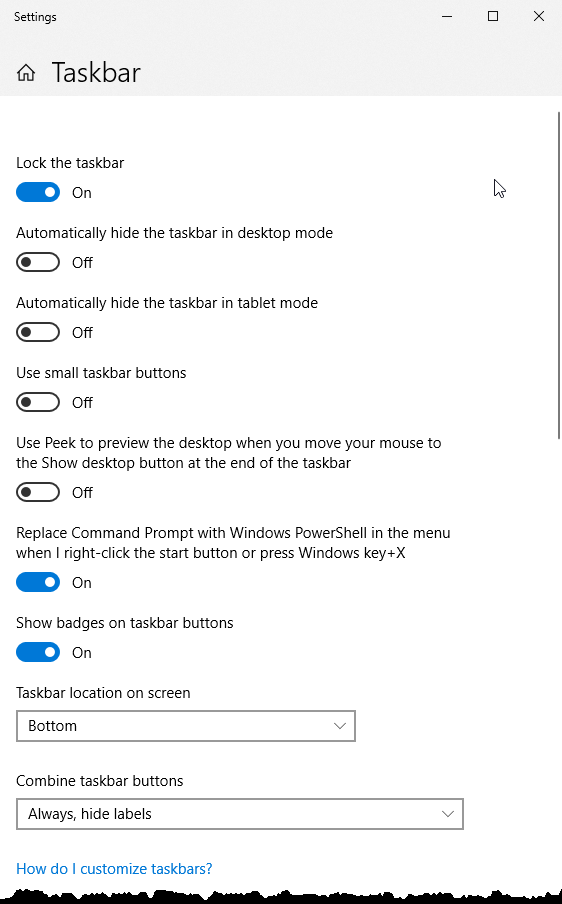It's possible to customize the size of the icons on the taskbar. You may want large icons if you have difficulty seeing them clearly. Or, if you have a lot of icons on the taskbar, you may want small ones so that they all fit nicely. In either case, you can easily change the icon size by right clicking an open space on the taskbar and selecting the Properties option from the resulting Context menu. Windows then displays the Taskbar and Start Menu Properties dialog box. (In Windows 8 it is the Taskbar and Navigation Properties dialog box.) (See Figure 1.)

Figure 1. Changing your icons' size on the taskbar.
Depending on your version of Windows, you may see a checkbox entitled Use Small Icons or one entitled Use Small Taskbar Buttons. Regardless of the wording, choosing this option significantly reduces the size of the icons on the taskbar. This change occurs as soon as you click OK or Apply. Similarly, if there is already a checkmark in that checkbox, clicking it to remove the checkmark will cause your tiny icons to be enlarged.
The steps to changing the size of the icons on the taskbar is somewhat different in Windows 10. Follow these steps:

Figure 2. The Taskbar section of the Settings dialog box.
![]()
![]()
![]() This tip (3584) applies to Windows 7, 8, and 10.
This tip (3584) applies to Windows 7, 8, and 10.
The Notification Area is located at the right side of the taskbar. It represents an active area of information for ...
Discover MoreDon't like the Taskbar visible on the screen? You can easily hide it when you aren't using it by making just one small ...
Discover MoreA new Windows feature allows for quick access to news and weather directly from the Taskbar. See how to turn this feature ...
Discover MoreThere are currently no comments for this tip. (Be the first to leave your comment—just use the simple form above!)
Copyright © 2025 Sharon Parq Associates, Inc.
Comments